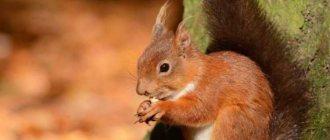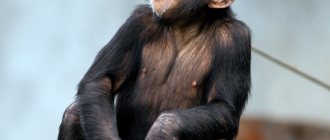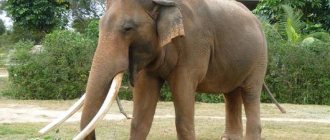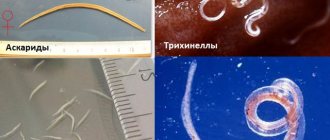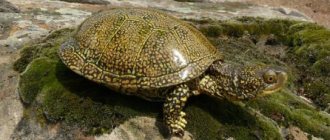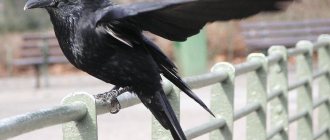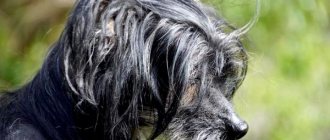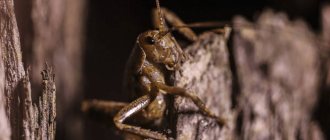Peach is a green pygmy monkey, or vervet monkey. He is 7 months old, and I bought him when he was 2 months old. Usually monkeys are separated from their mother at the age of 7-8 months, but I raised him myself, and now I am his mother. When Peach grows up, he will be approximately 60 cm tall. Now we are raising him as a future artist.
In the photo: green pygmy monkey
Description of the green monkey
The physique of green monkeys is graceful.
Males are larger than females. Their weight is 3.8-8 kg. Females weigh from 3.4 to 5.2 kg. The length of males is from 42 to 60 cm. For females, this figure is 30-50 cm. The cheek pouches of these monkeys are well developed, thanks to which they can take a large amount of food into them. The hind and front legs are the same length. Females and males are endowed with sharp, long fangs. The tail is long, with a downward curved tip. The ears are small and pointed. — Advertising —
The fur is thick and soft. On top it is silver-gray, olive or reddish-green. The abdomen is light yellow or pale gray. The muzzle is black, trimmed with light fur. There is a dark “cap” on the head. Baby green monkeys have black fur and pink faces. They acquire adult coloration only by the age of 4.
Feeding characteristics of the green monkey
Green monkeys eat both plant and animal foods. They eat fruits, seeds, grass, buds, roots, and foliage. In addition, their diet includes large insects, birds, their eggs, lizards, and small rodents. These primates quite often attack farms, eating cucumbers, bananas, cherries, and peanuts. For this reason, people often view them as pests and destroy them.
Green monkey behavior
Green monkeys differ from many monkeys in that their herds consist of several adult males who constantly fight among themselves for power.
Leaders in such herds change quite often. This happens if one of the males leaves the herd, someone new comes in, or a strong young male grows up. Green monkeys mark their areas using the secretion of musk glands, which are located on their faces. To leave a mark, they rub their faces against branches and stones. These signs show other members of the species the boundaries of each group's territory. The size of a group of green monkeys' patch depends on the amount of food on it.
The herd consists on average of 80 individuals, which are divided into small groups (2-11 monkeys), consisting of young bachelor males, males, females and their offspring. Females always live together, males can lead a scattered life. But the hierarchy in the group is always strictly observed. Higher-ranking individuals receive better food. The leader male is the leader and guardian. The area is protected from strangers by both females and males.
Green monkeys are diurnal. Food is found on the ground and in trees. They move on four legs and can swim. Thanks to their rather long limbs, they are able to develop high speed while running. They sleep in the treetops. This species of primate has well-developed facial expressions.
Links[edit]
- ^ a b Groves, C. P. (2005). Wilson, DE; Reader, D. M. (ed.). Mammal Species of the World: A Taxonomic and Geographical Guide (3rd ed.). Baltimore: Johns Hopkins University Press. pp. 158–159. ISBN 0-801-88221-4. OCLC 62265494.
- Kingdon, J. & Gippoliti, S. (2008). "Chlorocebus sabaeus" IUCN Red List of Threatened Species
.
2008
: e.T136265A4267012. DOI: 10.2305/IUCN.UK.2008.RLTS.T136265A4267012.en. - ^ abc Kingdon, J. (1997). The Kingdon Guide to African Mammals. London: Academic Press Limited. ISBN 0-12-408355-2.[ page required
] - ^ abcde Cawthon Lang, K. A. (2006). "Primate Fact Sheets: Taxonomy, Morphology and Ecology of Vervet (Chlorocebus)". Retrieved August 13, 2007.
- Cornelis J. Hazevoet1 & Marco Masseti (2011). "On the history of the green monkey Chlorocebus sabaeus (L., 1766) in the Cape Verde Islands, with notes on other introduced mammals" (PDF). Sociedade Caboverdiana de Zoologia. ISSN 2074-5737. Quote journal requires |journal=(help)
- ↑
Matthew Keller, [1], Animal Diversity Network, March 26, 2012
Reproduction of the green monkey
Green monkeys are polygamous animals.
One male mates with several females. The breeding season is seasonal depending on the region of residence. So, in the Caribbean it occurs in April-July, and in Africa - in October-December. The duration of pregnancy is 168 days, after which 1 baby is born, covered with fur and with open eyes. The female feeds him with milk for about one and a half years. At this time, the mortality rate is highest for this species of primate, it reaches 60%. The mother immediately cleans the newborn, and he clings to her belly, where it is convenient for the female to hold him. In the first weeks of life, it is the female who actively takes care of the baby: she cleans the fur, licks it and gives it water. The mother, trying to run far away, deftly pulls the cub towards her by the tail. The little green monkey spends about a year next to her until new offspring appear.
With the gradual transition of the cub to natural food, the mother feeds him milk less and less, and before mating her lactation ends. When the cub grows up and tries to reach the nipples, the female pushes him away. The female gives babies at the age of several months to hold and carry them to their older brothers. This helps the latter to acquire useful skills in looking after the cubs that they will have in the future.
Puberty in this species occurs slowly. Females reach sexual maturity at 4 years, males at 5 years. In general, the duration of this process is related to the amount of food. Young males, upon reaching sexual maturity, move on to independent life, and females can remain with their mother. Males begin mating only after they have won a certain place in the hierarchy of the group.
In their natural environment, green monkeys live for about 20 years. In captivity they sometimes live from 40 to 45 years.
Natural enemies of the green monkey
Green monkeys are often attacked by maw-eating eagles, which slowly soar in the sky in search of their next victim.
When unwary members of the herd descend to the ground, they can be attacked by snakes, for example, the spotted ringed python. Their other natural enemies are leopards and other felines that can climb trees. Crocodiles lie in wait for monkeys at a watering hole. Herbivorous baboons sometimes attack baby green monkeys. But in general, today the population size of this species does not cause concern, it is stable and quite numerous.
What to feed your vervet monkey?
Vervet cats can be given any fruit (except citrus fruits). The main thing is not to overfeed. Food is given in portions in the morning and evening.
From experience: Monkeys do not know how to stop, they eat as much as they are given, and it is dangerous to overfeed them - there may be health problems.
Sometimes you can give meat. I give the chicken as a puree. You can also treat the monkey to an egg.
Any vegetables are provided. Peach loves onions - it is useful to give them in winter as a preventive measure.
Peach also eats baby porridge, nuts, and seeds.
You can drink diluted tea, juice, fruit drink.
Additionally, we gave Peach calcium (crushed eggshells) and fish oil.
You should not give sweets to the monkey; it is better to treat the monkey with fruit. You should also not give citrus fruits, fried, fatty, salty, or spicy foods.
In the photo: vervet
Interesting facts about the green monkey:
- Green monkeys often destroy grain crops, gardens and plantations, and for this reason local farmers hunt them as pests.
- This species of primate carries a particularly dangerous infection called the Marburg virus, which causes Marburg hemorrhagic fever (Maridi), or “green monkey disease.”
- Using green monkeys, scientists model the course and therapy of human diseases such as AIDS, behavioral disorders, metabolic disorders, and obesity.
- The cubs of this species of primates can suck on their mother’s nipples not only to eat, but for them this is a special game that the female allows them until they are one year old.
- Green monkeys help in the spread of plants: when they eat various fruits, they do not chew the seeds, which pass through their gastrointestinal tract and fall with excrement to the ground far from the place where the mother trees grow.
Types of pets
Now let's look at the species that can be kept in an apartment or country house. These are usually small animals that do not take up much space. But no matter the size of a pet monkey, it also requires attention and care.
By the way, on our website most-beauty.ru there is an interesting article about the TOP 10 most expensive pets in the world.
12
Cynomolgus macaques
They spread widely across the islands of the Malay Archipelago, in India and along the Indochina Peninsula. They prefer tropical and mangrove forests. They violated the Wallace Line, which separates the Australian and Asian fauna.
Often settles near human habitation. These animals of the monkey family are excellent swimmers. They are omnivores. They eat fruits, snails, insects, and catch crustaceans from the water.
Their second name is cynomolgus macaque. Although crabs are not the main component of their diet. In 2022, a successful experiment was carried out to clone two individuals of this species.
13
Wistity
The world is better known as the common marmoset. Very small monkeys, not growing more than 18 cm. Females are slightly larger than males.
The weight of adult marmosets is 230–250 grams. They live in the eastern regions of Brazil. Stay in families of up to 15 individuals. It feeds on plant foods, but also happily hunts insects, snails, frogs, and small lizards.
Cubs are born weighing only 25 grams. In 2014, geneticists managed to decipher the genome of this species. This made it possible to trace the history of their development and identify related species.
14
Capuchins
Due to their small size and playfulness, they often become favorites of adults and children. They easily adapt to life in captivity.
But we must remember that this is still an animal, not a child. A special composition and nutritional standards are required. Walks in the open air. Inclusion in the diet of foods containing components necessary for development.
The genus includes more than 30 species, and each has its own conditions of detention and care in captivity.
More photos of beautiful monkeys:
While preparing this article, we found a huge number of photographs of beautiful monkeys, which we hasten to share with you.
15
Magot
16
Mandrill
17
Swimming macaques
Of course, this is not a separate species of monkey. We just wanted to share with you photos of macaques swimming.
18
Orangutan
19
Saymiri
20
Baboon
21
Proboscis
?
